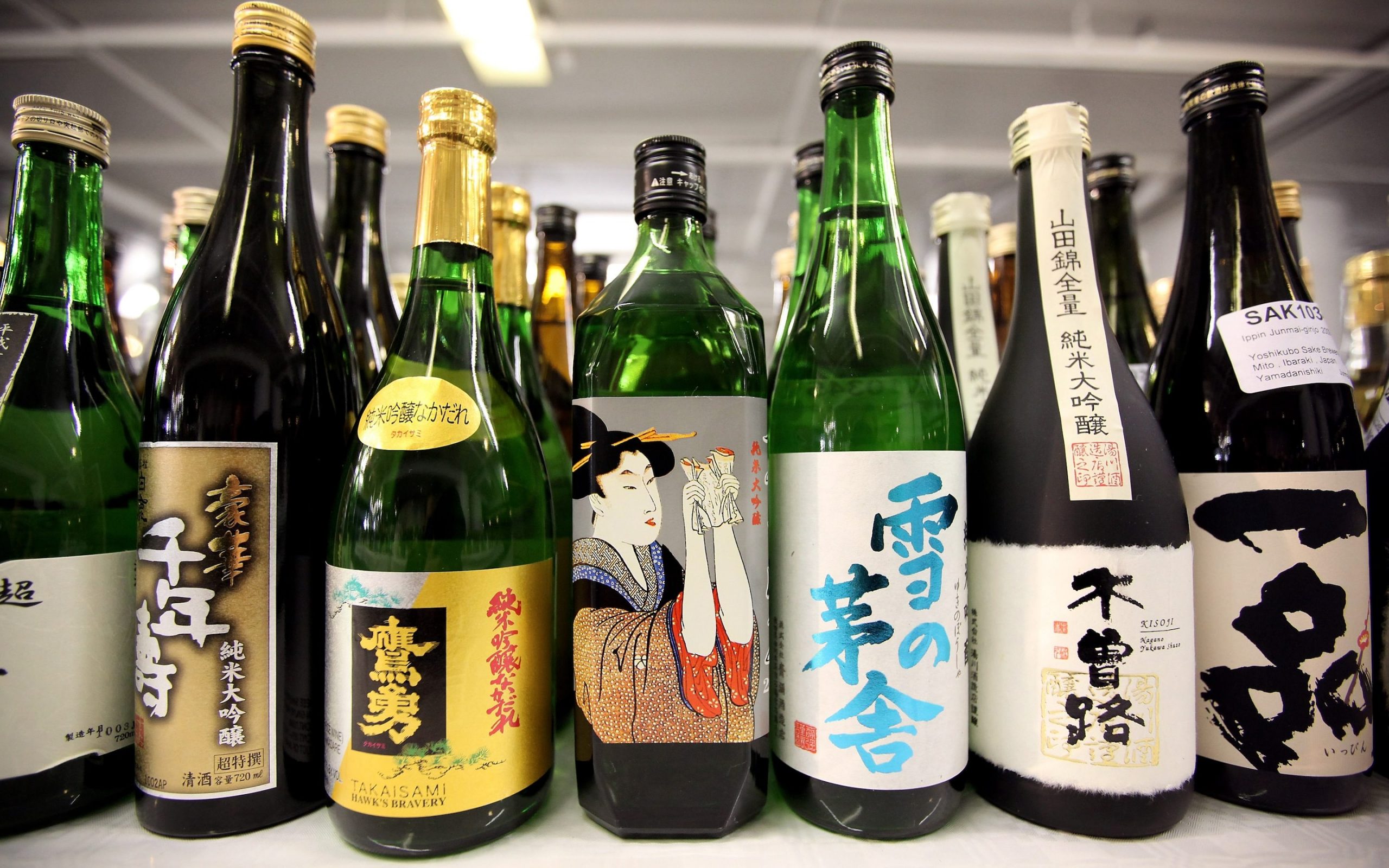
Sake is a type of Japanese rice wine and one of Japan’s greatest gifts to the world. When we think of the word ‘sake’, most would picture a bottle of liquor with Japanese calligraphy strewn across it – which might actually be sake!
In Japan however, the word ‘sake’ simply refers to all alcoholic beverages from beer, liquor, wine etc. Our gentrified perception of the sake we are used to is called – Nihonshu in Japanese, which appropriately translates to ‘Japanese alcohol‘.

- WAYS TO DISTINGUISH SAKE:
- Type of rice used in the brewing process.
- Location of where the sake was produced.
- Brewing, filtration methods etc.
- How polished the rice is.
Polish That Rice!

As mentioned earlier, sake is a Japanese rice wine primarily made from… rice of course! That being said, the rice used to make sake is different to the one we eat.
Like any other spirit, the raw ingredients of the sake are first harvested and ‘polished’ beforehand.
Polishing mills the rice and plays a vital role in shaping good sake. The more polished the rice is, the better the sake. Generally speaking, good sake undergoes 50-70% of polishing.

To put things into perspective, a sake polished to 70% means that 30% of its raw rice kernel has been polished away, leaving 70% of its original size.
In summary, a higher level of polished rice places the sake at a higher classification level. Then again, a higher percentage of polished rice doesn’t necessarily make a sake better.
On the contrary, many sake enthusiasts prefer cheaper and local-made bottles as long as quality ingredients by good brewers were used to make it.
5 Main Types of Sake

With an abundance of sake types on the market, we’re going to keep things simple by focusing on five main kinds of sake.
1. Junmai (純米)
Best served: Hot

Junmai is the Japanese word for “pure rice.” This term carries significant importance in the world of sake to differentiate pure rice sake from non-pure rice sake.
It’s brewed exclusively from: rice, water, yeast, and koji – without the use of any additives (eg: sugar). Sake can only receive a ‘junmai‘ classification if its rice polishing ratio (RPR) is at least 70%.
Typically rich and full-bodied, a Junmai usually has intense and slightly acidic flavours. In comparison to other sake types, Junmai is noticeably higher in acidity.
2. Honjozo (本醸造)
Best served: Warm (or chilled)

Similar to junmai, Honjozo sake also uses rice with an RPR of 70%. The key difference between the two is that Honjozo contains a small amount of distilled brewers alcohol.
This is done to create a smoother flavour and more fragrant aroma in the sake. The addition of brewer’s alcohol reduces the potency of a sake.
On that note, the inclusion of brewers alcohol gives the sake a light, smooth body and flavour. This process also boosts the sake’s aroma making it all the more distinctive.
3. Ginjo (吟醸)
Best served: Chilled

Ginjo-shu (shu – Japanese term for sake), considered to be a ‘premium sake‘, is made from rice with 60% RPR.
Brewed from labor-intensive techniques and a special type of yeast, a ginjo-shu mash is left to ferment in low temperatures – enhancing the sake’s final taste.
The result of this brewing process creates a fragrant spirit with a flavour that is light and fruity yet complex at the same time. For beginners, Ginjo sake is very easy to drink and best served chilled to keep its distinct flavours and aroma.
4. Daiginjo (大吟醸)
Best served: Chilled

Daiginjo basically means ‘super premium sake‘. The word ‘dai’ in its classification level means big and is hailed as a sake brewer’s magnum opus. Brewing daiginjo is done through very precise methods, using polished riced of at least 50%.
Being a super premium product, the price tag of a Daiginjo sake can set your money back quite a bit. Similar to Ginjo-shu, Daiginjo sakes are best served chilled to bring about this light drink’s aromas – paired with complex flavours.
5. Namazake (生酒)
Best served: Chilled (Never warm or hot)

Essentially, Namazake is unpasteurised alcohol. While that might sound a tad bit unpleasant, in actuality every type of sake can be considered a Namazake regardless if you’re enjoying a bottle of Junmai or Ginjo-shu.
Because it is unpasteurised, keeping Namazake refrigerated is crucial to preserve the drink’s flavour and aroma.
While a number of factors determine a drink’s flavours, Namazake is typically fresh and fruity and pleasantly flaunts a sweet aroma.
Which Type Of Sake Should You Get?

The number of times I’ve said this has grown tiresome, but the best drink for you really depends on your own preferences. A common perception among sake drinkers is that if a bottle is not labelled ‘junmai‘, it automatically means that it sucks. This is false.
Just because a junmai is one of easiest variants of sake to remember (and fun to say aloud), this doesn’t mean that other types of sake are lesser in quality or flavour.

Look at Honjonzo sake for example. The addition of brewers alcohol into their rice mash creates a smoother spirit overall with enhanced flavours and aromas unique to the way its brewed.
Everybody in the world deserves to try a good bottle of sake. Whether you’re a connoisseur or beginner, we here at The Good Stuff are beyond proud to announce that we are now carrying a list of different sake types:
For all your liquor needs, browse through our shop page and have your order delivered to you!





